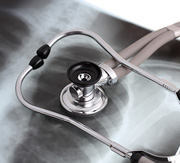< Return to trials
COPD

Overview
Lillestol Research has performed multiple trials in the COPD indication/diagnosis. The trials have varied in the severity of COPD required for enrollment as well as exacerbation requirements and trial objectives. Our clinic has several trained coordinators in spirometry and our own spirometry equipment.
Spotlight Trial(s)
- This was a nebulized investigational product, active-controlled trial for patients with COPD. Lillestol Research was able to successfully meet and exceed the sponsor’s enrollment expectation randomizing 11 patients in a 4-month enrollment period.
- This was an observational trial involving one office visit per patient. This trial followed patients diagnosed with COPD and examined the relationship between physician assessment of COPD status and patient’s spirometry results. Lillestol Research was able to meet the sponsor’s enrollment expectation and site enrollment limit by randomizing 9 patients in a 4-month enrollment period.
- This was a nebulized investigational product, placebo-controlled trial for patients with COPD. Lillestol Research was able to successfully meet and exceed the sponsor’s enrollment expectation randomizing 11 patients in a 6-month enrollment period.
Definition
Chronic obstructive pulmonary disease (COPD) is a disease, usually caused by smoking, in which the airways of the lungs narrow over time making it difficult to breathe. The narrowing of the lungs limits airflow, causing shortness of breath (dyspnea).
Description
COPD is often a mix of two diseases:
- Chronic bronchitis. In chronic bronchitis, the airways that carry air to the lungs (bronchial tubes) get inflamed and make a lot of mucus. This can narrow or block the airways, making it hard for you to breathe.
- Emphysema. In a healthy person, the tiny air sacs in the lungs are like balloons. As you breathe in and out, they get bigger and smaller to move air through your lungs. But with emphysema, these air sacs are damaged and lose their stretch. Less air gets in and out of the lungs, which makes you feel short of breath.
Causes and Symptoms
COPD is almost always caused by smoking. Over time, breathing tobacco smoke irritates the airways and destroys the stretchy fibers in the lungs.
Other things that may put you at risk include breathing chemical fumes, dust, or air pollution over a long period of time. Secondhand smoke is also bad.
It usually takes many years for the lung damage to start causing symptoms, so COPD is most common in people who are older than 60.
You may be more likely to get COPD if you had a lot of serious lung infections when you were a child.
The main symptoms of COPD are:
- A long-lasting (chronic) cough
- Mucus that comes up when you cough
- Shortness of breath that gets worse when you exercise
As COPD gets worse, you may be short of breath even when you do simple things like get dressed or fix a meal. It gets harder to eat or exercise, and breathing takes much more energy. People often lose weight and get weaker.
At times, your symptoms may suddenly flare up and get much worse. This is called a COPD exacerbation. An exacerbation can range from mild to life-threatening. The longer you have COPD, the more severe these flare-ups will be.
Source
http://www.webmd.com/lung/copd/tc/chronic-obstructive-pulmonary-disease-copd-overview
If you have been diagnosed with COPD or have a history of COPD symptoms, contact us today to learn more about our current study opportunities for this diagnosis.
Call us at (701) 232-7705 or toll-free at (866) 532-7705.
Signup online or email our recruiter at recruiter(at)lillestolresearch(dot)com.
Your information is always kept confidential.